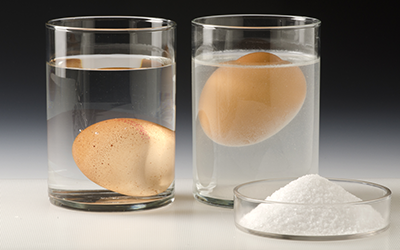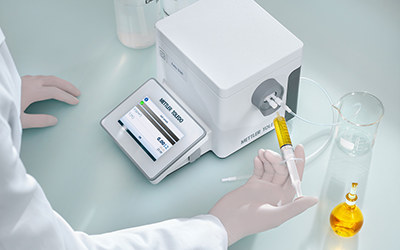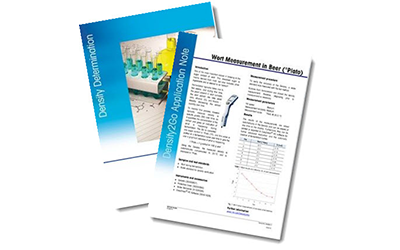
Portable Density Meter
Fully Automatic Portable Density Meter for the Lab or the Field
Designed to fit comfortably in a single hand, the lightweight Densito portable density meter allows for one-handed operation in the lab or on-the-go. Results are temperature-compensated and can be delivered in specific gravity, Brix, API units, and other formats.
Advantages of METTLER TOLEDO’s Portable Density Meters
Fast and Accurate
Obtain quick measurement results with accuracy to the third decimal place.

Automatic Sampling
The built-in electric sampling pump fills and empties the measuring cell fully automatically at the press of a button. Sampling speed can be optimized according to the task you are performing.
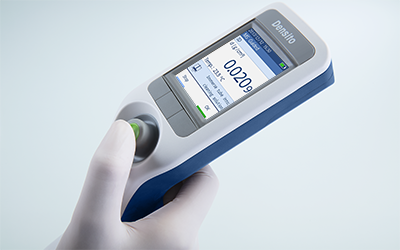
Guided Workflow
The Densito portable density meter guides the operator through the entire measurement and cleaning cycles thanks to the built-in guided workflow option.

Suitable for Any Industry
The sky is the limit: whether in the laboratory or the field, the Densito portable density meter works for a variety of industries.

RFID and Barcode Reader
Simply point and shoot to enter sample IDs using the built-in RFID and barcode reader.
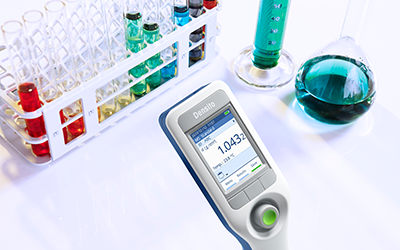
Comprehensive Results Storage
The Densito portable density meter stores up to 1,100 results, including the sample ID, measurement unit, temperature correction coefficient, instrument ID, date, and time.
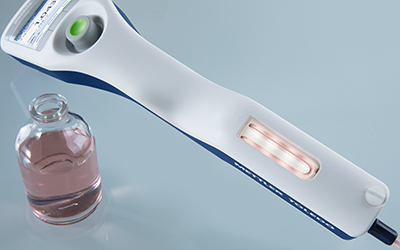
Excellent Visibility
The brightly lit color display delivers excellent visibility both indoors and out. Easily spot bubbles or inconsistencies that may affect a measurement, thanks to the backlit measuring cell.
Explore Our Services - Tailored to Fit Your Equipment
We support and service your measurement equipment through its entire life-cycle, from installation to preventive maintenance and calibration to equipment repair.
Support & Repair

Training & Consulting

FAQs
What is the advantage of a digital portable density meter vs. a pycnometer or an aerometer?
Our digital portable density meter is fast and accurate, with measurement results within seconds and an accuracy of 0.001 g/cm3. The built-in electric sampling pump allows controlled sampling and rinsing at the press of a button, avoiding user-dependent sampling workflows. Digitally supported workflows, including sample entry with a barcode or RFID reader, QC with automatic pass/fail information, and data export to a printer or PC software, reduce transcription errors and save time.
Can a digital portable density meter measure in units other than density and specific gravity?
In addition to density and specific gravity, our digital portable density meter has built-in conversion tables for Ethanol (Alcohol), Brix, API, Baumé, H2SO4, Plato, Proof (US and IP), and user-defined concentration.
What about temperature dependency of the density of samples?
Our digital portable density meter offers built-in temperature compensation, which allows you to measure the sample at any temperature between -10°C and 50°C (14°F to 122°F) and calculate the density at the required temperature (e.g. 20°). The built-in conversion tables already include temperature compensation. For any other samples, a temperature compensation factor can be entered, or, if not known, it can be automatically determined with the measurement at two different temperatures.
